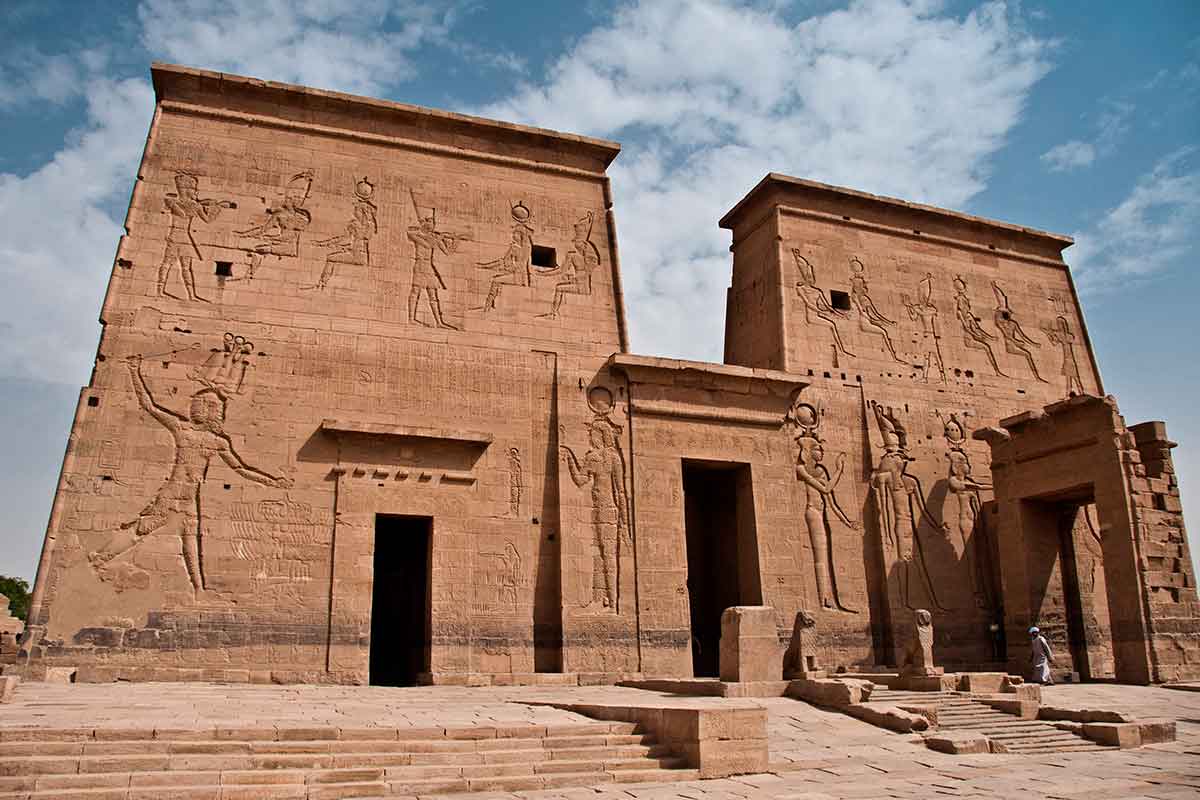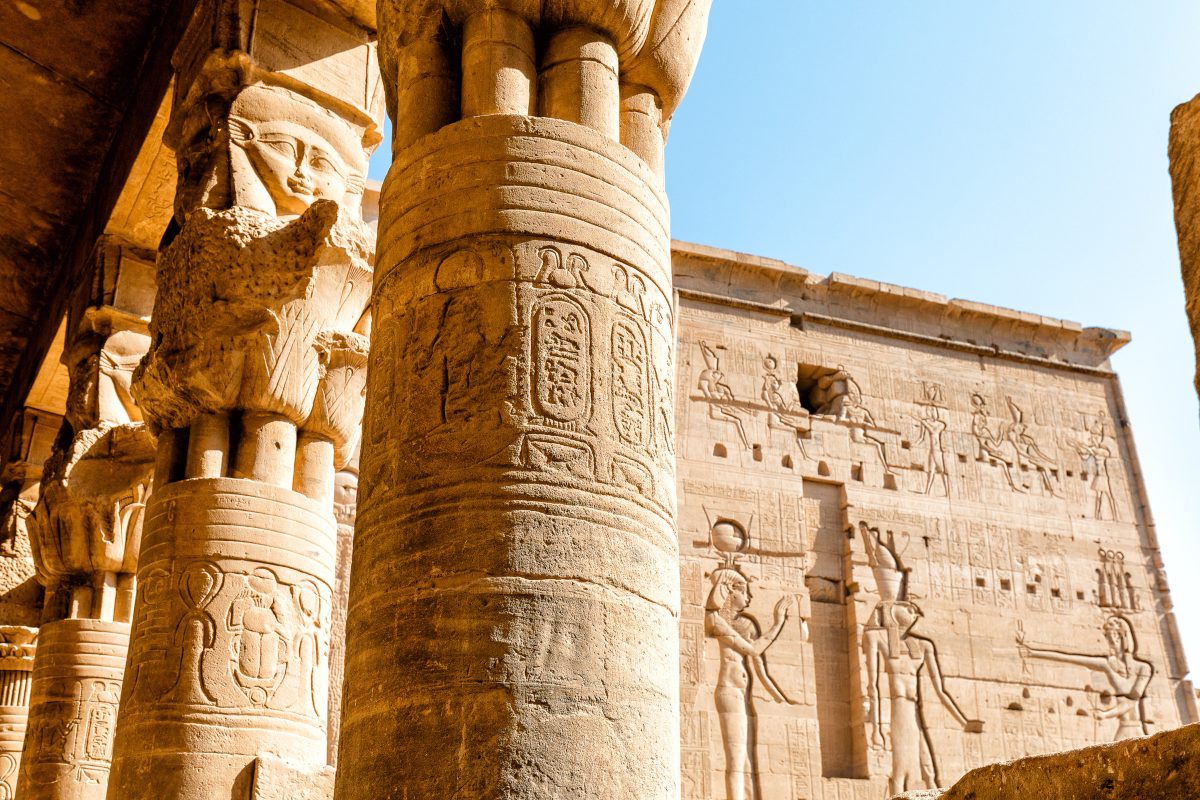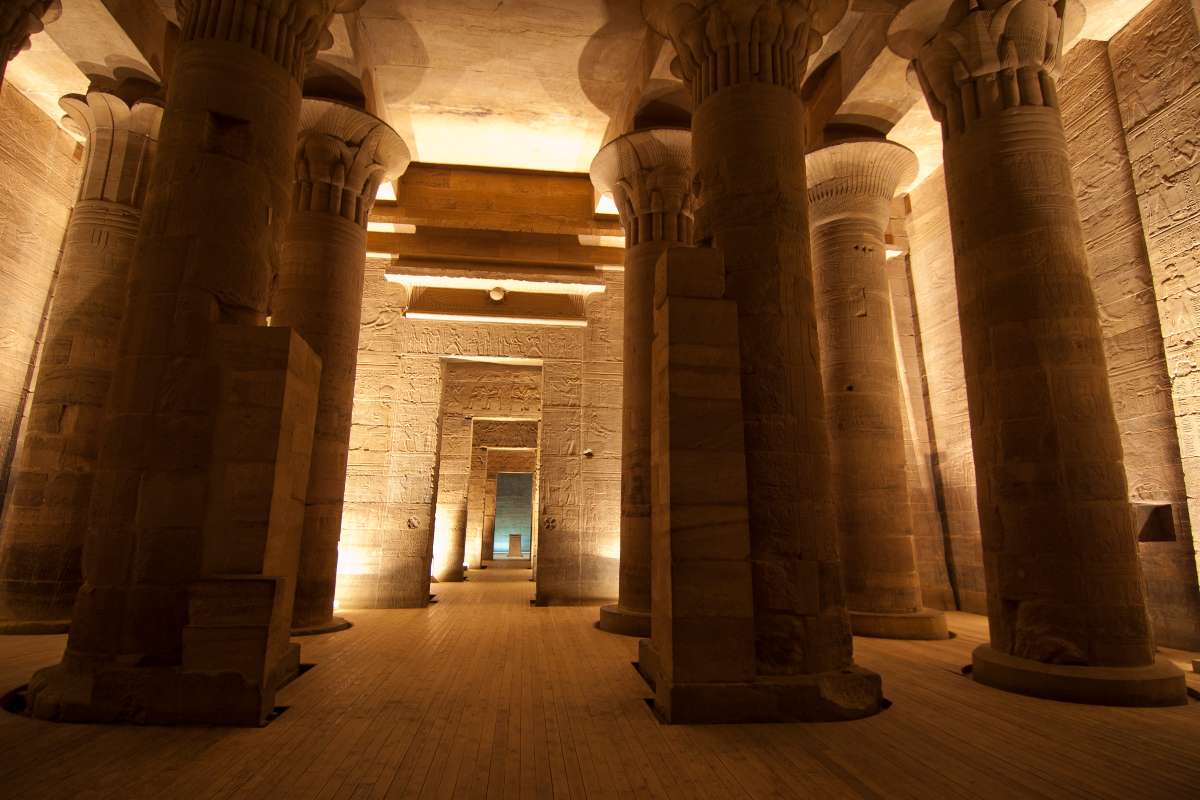For many, the Temple of Philae is the last great temple of Ancient Egypt. A monument that, due to its privileged location, awakens a unique romanticism, especially if visited at sunset or at night, as we explain below. Therefore, it is a classic and essential excursion from Aswan, so we tell you all the details about it on this page.
The Temple of Philae, in Egypt most southern, receives the name of the island on which it was originally located, although as we will see below, it was moved to its neighbor, Agilkia. In reality, the correct thing would be to speak of Temples of Philae, since there are several constructions that stand here.
None of them has an antiquity comparable to that of other monuments of Ancient Egypt, but that has precisely played in its favor: in addition to its undeniable beauty and its fascinating dialogue with the surrounding nature, it has suffered to a lesser extent the ravages of time. And all the tourists who visit the benefit from this Temple of Philae.
The oldest structure of all of them is the kiosk from the times of Nectanebo I (4th century BC, Dynasty XXX). The bulk of the complex falls within the Ptolemaic era, with Ptolemy III (3rd century BC) and Ptolemy XII (1st century BC) being some of its main architects, although the Romans also left their mark, as demonstrated by Trajan’s kiosk (in the 2nd century AD).
The Christians, for their part, also left their mark from the 6th century onwards, although not for good: the iconoclastic wrath caused images of some goddesses to be erased or disfigured, from the 8th century onwards. Spaces were also built or adapted in the enclosure to become churches, which have not been preserved and which lost their validity towards the 12th century.
In any case, the Temple of Philae survived as such longer and in better conditions than other sacred sites. That was largely due to the devotion that the gods venerated in these sacred sites aroused among its people. Mainly Isis, mother goddess in the religion Egyptian whose cult remained in force until the 6th century, in the times of the Byzantine emperor Justinian I. But also Mandulis, Nubian divinity very rooted in the area, or the goddess Hathor, another female divinity very associated with royalty for being considered the symbolic mother of pharaohs.
In addition to the cult of Isis and other local divinities, theTemple of Philae is associated with another cultural survival of Ancient Egypt: hieroglyphic writing. Here is where the last inscription in this type of writing is documented, back in 394 AD, when demotic writing was already in force. It is located on Hadrian’s gate and is an invocation to the god Mandulis.

The Temple of Philae, like practically all the temples located on the Nile or on its banks, suffered the threat of the waters when the riverbed increased its level with the construction of the Aswan dams. With the first, called the Low Dam, from the late nineteenth and early twentieth centuries, the waters partially covered the monuments during an important season of the year. And in the 60s, when that flood threatened to be definitive due to the construction of the second, or High Dam, it was decided to move the entire complex stone by stone.
Unlike other temples relocated next to Lake Nasser, on this occasion the transfer was much shorter: it was taken from the island of Philae to the neighboring island of Agilkia, in a project that sought such a level of fidelity in its reproduction that even its landscape was modified to make it look as much as possible to the primitive environment of theTemple of Philaeand the rest of the structures of the complex.

In the attractiveness of the Temple of Philae, its magnificent location plays a key role. The fact of being on an island, that of Agilkia, about 10 km south of Aswan and where there is nothing else to distract attention, makes it easy to feel the evocation of Ancient Egypt. Although not all the structures are in the same state of conservation, the purity of its forms in harmony with the waters of the river and the vegetation of the banks make up a very special landscape, which takes on all its beauty when admired sailing along the Nile.
To get here, there is no option to choose: it can only be done in small boats that depart from a small port in the town of Shellal, located several kilometers south of Aswan. Crowded on its dock are these boats that barely have capacity for a dozen people. A kind of water taxis that depart continuously from this port and from the port of the island.

As we said, this excursion will take you to discover a set of temples and constructions of great interest. And according to some experts, its distribution responded to a hierarchical order, where the main Temple of Philae was that of Isis. It is the largest and most spectacular, which attracts a good part of the attention thanks to its monumentality, appreciable from the entrance: it has a large porticoed access and two pylons spectacularly decorated with engravings of a sovereign of the Ptolemaic dynasty subduing his enemies. Among them, a hypostyle hall with elegantly carved columns. Of course, its sanctuary, which at the time was the most sacred and reserved part of the complex, decorated with reliefs on Isis and Osiris, is not lacking.
In addition to this Temple of Philae, there are other structures that you will see on your visit and you cannot miss:

Finally, a very special recommendation should be made: visit theTemple of Philae at night. The whole complex is illuminated in a spectacular way, with intimate lights that fill the place with magic from the moment the sun goes down. Its columns, its reliefs and all the decorative elements acquire greater beauty with this carefully studied lighting.
In addition, as is usual in other monuments of Egypt, such as Abu Simbel or the temples of Luxor, in theTemple of Philae light and sound shows take place in several nightly passes that will delight all visitors. Games of warm and cold colors, enveloping tunes and projections of images on the pylons are some surprises that these shows hold.
All this makes the Temple of Philae one of the favorite excursions of all travelers, regardless of their knowledge about Ancient Egypt. If you want us to help you book your private visit to this magnificent monumental complex, put yourself in the hands of our agency. We will take care of providing you with a private guide, as well as managing the tickets and water transport so that everything goes perfectly. Contact us for this and any other detail of your stay in Aswan!

